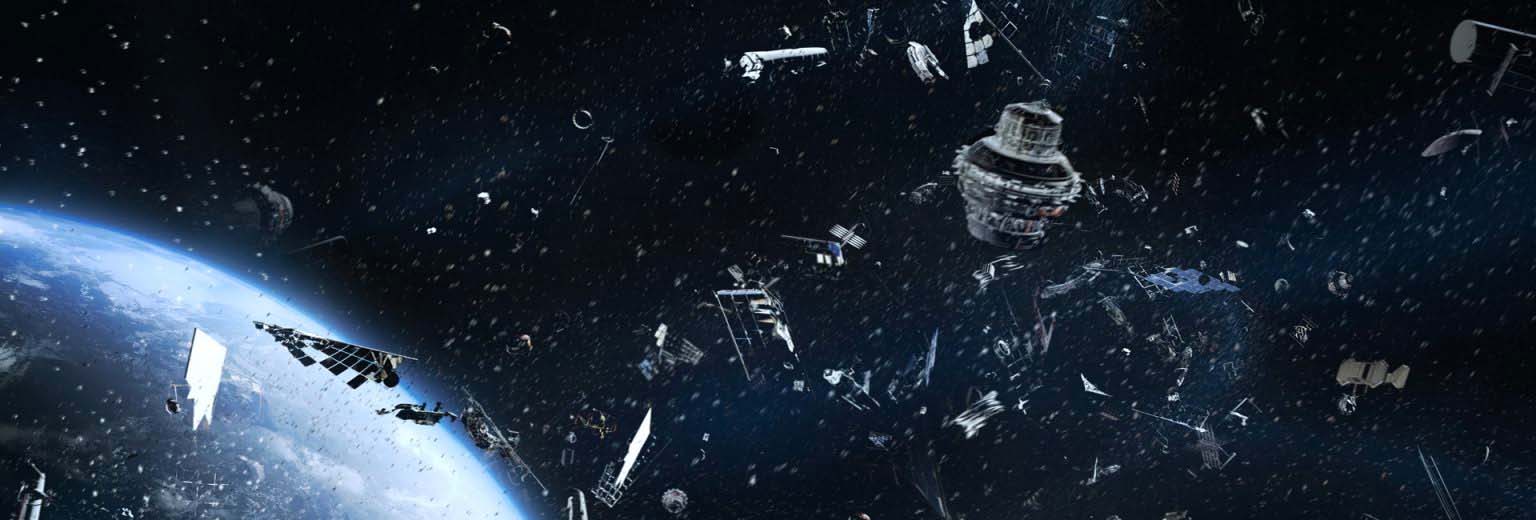Space Junk Removal: The Economic Opportunity of Modern Cleanup Technology
Since the inception of the space age in 1957, humankind has been utterly fascinated with getting technology into outer space for scientific exploration. However, these endeavors have left a significant amount of space junk in their paths.
Now, it’s up to the world’s leading researchers to discover the best and most economical ways to remove the trash that lies in orbit.
How Much Junk is Floating in Space?
Currently, NASA estimates that there are over 21,000 pieces of space junk that is softball-sized or larger and more than 500,000 pieces of space junk the size of a marble or bigger orbiting the Earth. When put together, that is more than 9,200 tons of space junk floating in space.
With about 6,250 satellites currently in orbit, only about 3,900 are still functioning. Additionally, nearly 560 explosions, collisions, and other events are predicted to add to the space junk floating in orbit. Naturally, more satellites will equal more collisions, and thus, more fragments of junk floating through space.
Because there is so much debris in the Earth’s orbit, it’s no wonder that the space industry has decided to take on cleanup projects. However, finding the best way to take on this massive endeavor in a cost-effective and successful way has been a grueling task.
How Can Space Debris be Cleaned Up?
While having a space junk graveyard orbiting the Earth does not currently have a direct impact on humans, it does have severe financial consequences. Not only does the increasing amount of space debris make it more difficult for new satellites and space missions to make it past the Earth’s orbit, but the increasing space junk will cause an increasing number of collisions.
Space debris can be cleaned in several ways, but robot arms, harpoons, nets, magnets, and even lasers have been proposed. Additionally, NASA has suggested developing solar sail-powered satellites that will guide space junk towards the Earth’s atmosphere to be disintegrated.
More recently, Russia has proposed a satellite called the Foam Debris Catcher that could capture up to a ton of space junk in one go by collecting it with engineered foam arms.
Space Debris Removal Projects: Who is Cleaning Up Space Junk?
Many agencies are working towards cleaning the debris in space. Some of the companies that are currently working to address the space debris issue include:
- – Astroscale. Works towards more space junk removal.
- – Japan’s Aerospace Exploration Agency (JAXA). Working with Astroscale on the Commercial Removal of Debris Demonstration project (CRD2).
- – Northrop Grumman. Developed Mission Extension Vehicle spacecraft (MEV-1) to intercept falling satellites.
- – ClearSpace. ClearSpace-1 will launch in 2025 on a mission to clean debris.
- – Lockheed Martin. Plans to create a powerful radar, Space Fence, that will detect space debris.
Economic Potential of Space Junk Initiatives
Even though current debris mitigation guidelines enact a rule that states all satellites must be removed from space within 25 years of a completed mission, hardly anyone is enforcing it. Additionally, the removal of a satellite can be tricky because satellites can break down or become damaged by a collision.
Firstly, the existence of space debris is expensive and will continue to become more expensive with every collision that occurs. If more satellite collisions occur, the overcrowding of the debris could threaten the $335 billion space industry. Not only could this negatively impact space research, but nearly every industry relies on space-based services for communication, navigation, weather prediction, and more.
Moreover, the more space junk that piles up in the atmosphere, the more dangerous it will become to complete a mission to space. Should the number of debris reach a certain amount, the junk in orbit could become stuck in “Kessler syndrome” and collide so frequently that the area becomes impassable.
Orbital Use Fees
One such way that could greatly increase the value of the space industry is the implementation of orbital use fees. According to Akhil Rao and his research team, an orbital use fee that reached a total of $235,000 by the year 2040 would more than quadruple the value of the space industry.
Unlike launch fees that cover the process to get a satellite, not the sky, the usage fee would charge a satellite user for having a satellite in the sky. They would even consider altering the price depending on the risk of using a certain orbital, so it would also likely decrease the number of satellite collisions.
Not only does the value of the satellite industry increase because there would be fees involved with use, but fewer collisions could save the space industry millions, if not billions of dollars. One study found that the value could increase by as little as $600 billion and as much as $3 trillion.
PHOTO CREDIT: ISTOCK/JANIECBROS



